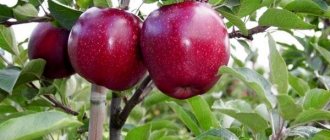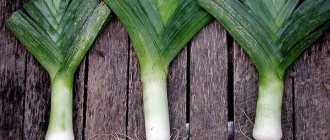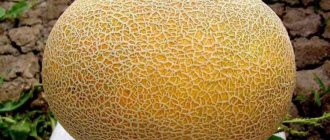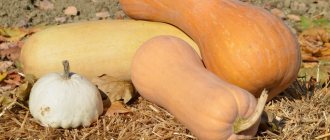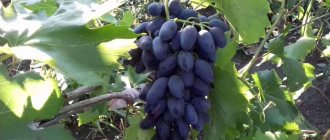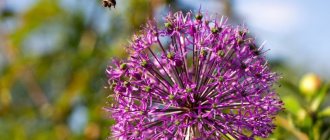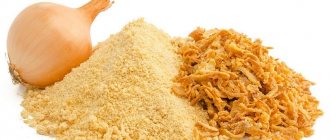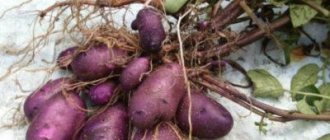Classification and botanical description
Division and class: Magnoliophyta, order and family: Fabales, genus Pisum (pea).
Peas are a member of the legume family and belong to the typical pea species. The herbaceous plant, bred solely by human activity, is not found in the wild. The sowing type of pea is common in the agricultural industry. This is an annual climbing plant with paired pinnate leaves with abundant curling tendrils. The tendrils are modified leaves and help secure the entire bush to the support, raising the plant 1-2 meters above the ground.
The root system is taproot; stem – tetrahedral; reaches 100 cm in height; during flowering (June–July), single bisexual self-pollinating flowers appear, the calyxes of which are white, sometimes pale pink or faint red-violet in color. During the ripening period (late July - August), beans appear in smooth green pods. The peas are slightly flattened, smooth, from 3 to 10 pieces in one pod. In industrial agriculture, food peas (for human consumption) and fodder peas (for animal feed) are sown.
Growing conditions
Peas are cultivated in different regions, but they still prefer a temperate climate. To grow peas, certain conditions are required:
- sunny area, the crop does not tolerate shade well;
- open and well-ventilated place;
- remoteness of groundwater;
- the soil is light and fertile, preferably loamy, neutral or slightly acidic;
- good aeration;
- correct predecessors - almost all crops, except representatives of the legume family, cabbage, potatoes, tomatoes, pumpkin, cucumbers are better;
- for seed germination, a temperature of 1-2 degrees is needed, vegetative organs begin to form at 12-16 degrees, and generative organs at 16-20 degrees;
- bean growth and seed filling occurs at 16-22 degrees;
- Peas do not like heat, at a temperature of 25 degrees their growth slows down, at 35 degrees and above it stops;
- do not return the peas to their original place for at least 4 years.
Not only the predecessors of peas are important, but also the crops grown in the neighborhood. It gets along well with potatoes, tomatoes, radishes, radishes, lettuce, corn, sunflowers, and strawberries. They can even be planted in the same bed. The proximity of seed peas to plants of the onion family, watercress, dill, fennel and basil should be excluded.
If the soil is acidic, you need to add lime. 0.35-0.4 kg of substance per square meter is enough.
The soil for planting peas needs to be prepared in the fall. When digging, you need to add organic matter - per 1 square meter. m up to 6 kg of fertilizers. In spring, loosening of the area is required. At the same time, it is effective to introduce ash.
You cannot use fresh manure to fertilize the site, otherwise the green mass will grow rapidly, and flowering and fruit formation will slow down.
Types of seed peas and varieties
The popular types of peas most often planted by humans are:
- Brain - got its name because of the wrinkled appearance of ripe peas. However, this species is brought to a mature state only on specialized botanical farms to obtain seeds. Peas planted by summer residents and gardeners are eaten green, i.e. unripe. Housewives use it for preparing salads and home canning. The best varieties: Belladonna (late, frost-resistant variety), Debut (adapted to hot, arid climates), Calvedon (the most delicious variety for industrial production), Medovik (the sweetest of the brain varieties), Sweet Giant (has a record short growing season – 60 days).
- Shelling peas are the most popular type of seed peas in farms that sell grown peas as grain for further processing or for new sowing. It got its name due to its easy separation into two halves, which greatly simplifies and speeds up the processing process on an industrial scale. It is most often used for sale to farms. Rarely planted in dachas and gardens.
- Sugar snap peas - the name speaks for itself. This type of pea is popular among summer residents and gardeners not only because of the sweet filling, but also because of the shell - the pod. The best varieties: Zhegalova 112 (bred in Russia), Inexhaustible (the variety is resistant to drought), Rubchik (acclimatized sweet hybrid for growing in the Russian Federation), Sakharny 2 (late sweet variety), Pervenets (frost-resistant, weather-resistant tall plants, with which are convenient to harvest).
Brain peas
Peas
Sugar snap peas
Harvest and storage
The optimal time for harvesting should be based on the ripening time of a particular variety. Peas are collected in parts as they ripen. The pods must be torn carefully so as not to damage the stem.
The harvested crop can be prepared in different ways. The pods can be stored in a cool place or refrigerator for some time to be used for food.
For long-term storage, peas can be canned, frozen, or dried. They are frozen in one layer, and then poured into one bag or container so that the mass does not freeze. Sugar varieties can be frozen whole pods if they are not overripe. Peas are dried in an oven or in a ventilated room; to make it inaccessible to pests, it is better to place the dried raw materials in sealed containers.
Peas are an unpretentious annual crop used in various fields. It is important to determine the main purpose of growing a crop in order to select the right variety group and the best variety from it. Proper crop care will ensure a good harvest.
0
0
Copy link
Pharmacological properties and use in medicine
The rich chemical composition defines peas as a medicinal and/or dietary product for certain categories of people. For those who need to follow a strict diet that excludes meat, peas will help maintain a balance of proteins that are on par with animal proteins. This plant protein is also easily digestible, which facilitates and accelerates the processes of digestion and saturation during periods of energy shortage.
Peas are attributed to:
- improvement of metabolic processes in the body;
- diuretic properties;
- strengthening bone tissue;
- improving the functioning of the heart muscle;
- normalization of blood pressure;
- normalization of blood sugar levels;
- removal of stones/sand from the kidneys and urinary tract.
Peas also act as an antiseptic and astringent. You need to boil the upper above-ground parts of the plant and let them brew. This remedy helps to cope with gastrointestinal disorders (when taking the decoction orally) and skin diseases (rubbing, compresses).
Peas: description, beneficial properties, cultivation
24.10.2018 Peas
(lat.
Pisum sativum
, legume family) is the most popular and widespread crop among representatives of this species, well known for its dietary, nutritional and feed qualities. It is an early maturing climbing herbaceous annual leguminous plant with a growing season of 60 to 140 days. Its stem, depending on the variety, can be straight or branching, creeping or standard, up to 60–100 cm long. At its top there are pairs of thin tendrils (modified leaves), which cling to a nearby support and can raise the stem to a height of 1 –2 m. Trellis are often installed for climbing pea varieties.
The taproot of the plant, which often penetrates to a depth of 1–1.5 m, has many lateral branches and roots, in the nodes of which beneficial microorganisms, nitrogen-fixing nodule bacteria, develop, as in all legumes. Flowers, painted white, sometimes with a pink or purple tint, appear at the same time: first, buds form in the lower part of the plant, and then, as the stem grows, at the top. The plant is self-pollinating, although cross-pollination is possible. The fruit is a bivalve bean, inside of which there are pea seeds (on average from 3 to 10 pieces) of a round, slightly flattened or angular shape.
Nowadays, wild forms of peas can be found in the Mediterranean and the Middle East. The earliest archaeological finds of the culture date back to the late Neolithic era (discovered in Greece, Turkey, Syria, Jordan). In Egypt and Georgia, according to accurate historical data, peas were cultivated in the fifth millennium BC. e. Finds of the plant in Afghanistan, Pakistan, and India date back to a later period (about 2000 BC). The purpose of its cultivation was to obtain ripened peas. Along with beans and lentils, they formed an important part of the diet for the majority of the population of the Middle East, North Africa and Europe during the Middle Ages. At the end of the 17th–18th centuries, immature pea seeds – “green peas” – became very popular in Europe and then in North America.
Today peas are grown in many countries around the world. Canada is the leader in its production. The main consumers of the product are countries with rapidly growing populations (India, China, Türkiye). While inferior to grain crops in yield, peas are superior to them in nutritional quality. It contains a lot (up to 26%) of valuable protein, including a number of essential amino acids (lysine, tryptophan, methionine, cystine, arginine, etc.), which brings its composition closer to proteins of animal origin.
Peas are very rich in various essential macro- and microelements (potassium, calcium, phosphorus, iron, copper, zinc, magnesium, manganese, cobalt, selenium, sulfur, fluorine, boron, chromium, vanadium, strontium, titanium, aluminum, nickel, iodine, silicon, etc.), vitamins (A, B1, B2, B5, B6, B9, P, PP, E, H), antioxidants, sugars (more than 7%), starch (up to 3%), fiber, lutein, valuable vegetable fats (about 6%). In terms of calorie content, it is almost twice as high as potatoes: 100 g of dry product contains 298 kcal.
Although peas are not considered medicinal plants, their benefits to the body are enormous. It helps strengthen bone tissue, improves heart function and normalizes blood pressure, provides the body with valuable proteins, improves immune properties, and helps control blood sugar levels. Peas are used in dietary nutrition for anemia and exhaustion. The biologically active substances inositol and choline found in peas prevent the development of sclerosis. It also has a diuretic effect, activates the gastrointestinal tract, helps cleanse the kidneys of sand and stones, and neutralizes toxic salts of heavy metals. The pyridoxine it contains helps get rid of seizures. In addition, peas are a good preventative against cancer, hypertension, and heart attack.
The inclusion of this product in the menu has a beneficial effect on the condition of the skin and hair. It is often used in cosmetology as a component of anti-aging creams, for whitening, rejuvenating and removing pigmentation on the skin of the face. The vegetative part of the plant serves as a valuable feed additive in animal husbandry. Farmers use peas as green manure, since its ability to enrich the soil with nitrogen has a very beneficial effect on the yield of subsequent crops.
Peas are one of the healthy plant-based high-protein foods. Due to its cold resistance and early ripening, it is one of the first seasonal sources of vitamins among other vegetable crops. It is used both raw and dried, boiled, stewed, baked, fried. Peas are frozen, canned, pickled, flour is made from dry seeds, and stews, porridges, and soups are cooked. Heat treatment improves the taste of the product, increasing its sweetness, and the nutrients acquire a form more accessible to the body for absorption.
At the same time, the large amount of purine compounds in peas requires limiting its use for people suffering from gout, as well as urolithiasis. Contraindications also include allergic reactions, exacerbation of inflammatory processes in the intestines or stomach, nephritis, increased blood viscosity and thrombophlebitis. Peas are often included in diet menus for overweight people, but in large quantities the product can lead to the opposite result. It is not recommended to eat peas if you have flatulence.
Growing peas is not particularly difficult. The crop successfully grows and develops in temperate climates, and is quite cold-resistant - seedlings of some varieties can withstand temperatures down to -6°C, and young shoots and flowers - up to +2...3°C. Peas are very light-loving, do not tolerate shade well, and they are also a long-day plant. Prefers non-acidic (7 < pH < 8), light soils (sandy loam, loam) with a high level of fertility, sufficiently moist, but without high groundwater levels. Nitrogen-rich, low-fertility or acidic (pH < 4.5) soils are not suitable for growing peas. Another feature of the crop: peas do not tolerate heat well; they grow and develop successfully at +16...25°C. To grow it, you should choose sunny, well-ventilated, open areas.
Preparation of the site for the plant, namely the application of fertilizers, must be carried out in advance. It is better to enrich future pea beds with organic matter (compost, manure, bird droppings, etc.) in the fall, during digging. Peas respond well to nutrients such as potassium and phosphorus, so to obtain a full harvest, it is advisable to add potassium-phosphorus fertilizers to the soil. But this action is not recommended to be carried out immediately before sowing, as it will provoke an intensive increase in the vegetative mass of plants to the detriment of their yield.
The best predecessors for peas are potatoes, cabbage, pumpkin, cucumbers, and tomatoes. Since the plant is cold-resistant—seedlings can germinate even at a temperature of +1°C—sowing is carried out as early as possible, using the moisture in the soil preserved after the melting of the snow cover. Seeds are planted to a depth of 5–7 cm with a step of approximately 10–15 cm between them. The row spacing should be at least 25–35 cm. After sowing, the soil is rolled so that the seedlings can take root better. The optimal temperature for seed germination is +5...7°C; in this case, seedlings appear a week after sowing. At lower temperatures, seedlings can be expected to appear in two to three weeks.
To create better conditions, trellises are installed next to each row of peas, small support pegs are placed, or a low net is stretched along the row. This will help the plants develop successfully and make harvesting easier. When the seedlings reach a height of 10–15 cm, loosen the rows with a rake. From the moment the tendrils appear on the plants and the rows close, loosening stops. Further care of the crop consists of removing weeds, regular watering and periodic feeding of peas. Plants experience the most acute need for water during budding, flowering and fruit set. The irrigation rate at this time reaches 10 l / 1 m2. Simultaneously with watering, you can also fertilize the plantings by dissolving the required amount of fertilizers (for example, ammophosphate) in water.
Depending on their purpose, modern pea varieties are classified into three variety groups: brain
(used mainly for preservation),
sugar
(very tasty fresh) and
shelling
(grown mainly for the needs of the food industry, as well as for the production of bioplastics).
The most popular varieties of peas include: the ultra-early variety “Vera” (vegetation period - 50 days), early “Alpha” and “Ambrosia” (ripening period 45–55 days), high-yielding early ripening “Children’s Sugar” and “Oscar” (vegetation period up to 70 days), mid-season high-yielding variety “Pharaoh” (ripening occurs 68–85 days after emergence). Share on social networks:
Indications for use
Dietitians include pea dishes in patients’ diets in the following cases:
- during prolonged power loads for athletes and workers who use heavy manual labor;
- in the prevention of atherosclerosis and treatment of cardiovascular diseases;
- for elderly people (normalization of metabolism, improvement of memory, nutrition of brain cells, treatment of constipation);
- patients with headaches;
- patients with kidney stones and bladder diseases;
- patients with diabetes mellitus;
- people suffering from anemia and general exhaustion.
For diseases of the musculoskeletal system, the use of pea dishes is also recommended.
Climbing varieties
Climbing peas are used not only for harvesting, but also for decorative purposes. If you run it along a trellis, the resulting “green walls” look very impressive. They can also act as a curtain, protecting other crops from gusts of cold wind.
Alderman
Also known as Alderman and Toll Telephone. Considered the best tall variety in the world. The length of the stem reaches 1.5 m or more. Support is required. The variety is distinguished by its abundance of fruiting, even in a “poor” substrate. Does not suffer from fusarium.
Alderman peas - a clone of an old English variety
The pods are very large, thick, rich green in color, each containing 10–14 peas. The crop needs to be harvested every 2-3 days.
Telegraph
Late variety, stem height - 2 m or more. Belongs to the late category, the crop ripens in 100–110 days. The fruiting period is extended. Immunity is good, but not absolute.
Telegraph peas - late tall variety
The pods are about 11 cm long, each containing 10–12 peas. The grains are large and sweet.
Contraindications for use
There are currently no contraindications for use. However, it is important to remember that after eating pea dishes, slight bloating and flatulence are possible, which do not require treatment and go away on their own within a few hours. If a person has an intolerance to peas or allergic reactions, they should not consume them. It is not recommended to eat peas for those who have gastritis, ulcerative pathologies of the stomach and intestines, nephritis and circulatory failure, as well as gout.
Sugar
Sugar pea varieties are famous and loved due to their edibility and waste-free nature - you can eat not only peas, but the entire sweet blade, because the beans have practically no parchment layer. The grain of these varieties, contrary to the name, has a relatively low sugar content.
Baby sugar
The plant has a medium-length stem. The ripening period ranges from 1.5 to 2 months. The lower beans are attached at a height of about 30-35 centimeters. The children's sugar variety boasts a good yield of beans at technical ripeness - up to 2.5 kilograms per 1 square meter.
The beans are slightly curved, long, of medium width, with a sharp top, at technical ripeness - light green, without a parchment layer. Medium sized wrinkled peas. The variety is often called a delicacy.
honey pod
Most often, the stem of the plant is short, but sometimes it can reach medium length. The lower beans are attached at a height of 40-45 centimeters. The variety is mid-early, from sunrise it will take 55 to 65 days until the fruits ripen. Honey pod yield is confident, but not impressive: from 80 to 130 centners per hectare.
The beans are of medium length and medium width, slightly curved, and have a pointed apex. At technical ripeness they are green, without any parchment layer. They also have small, wrinkled seeds.
The taste of the honey pod is remarkable starting from its technical ripeness.
Sugar girlfriend
The plant has a short, sometimes medium, stem. The height of attachment of the lower beans is 70 cm. The variety is also mid-season - 65-70 days from germination to the start of bean harvesting. The yield of sugar girlfriend is up to 1.3 kilograms per 1 square meter or up to 0.5 kilograms of green peas.
The degree of bean curvature varies from slight to significant. At the same time, the pods are invariably long, of medium width, and have a pointed top. At technical ripeness, they are green or light green; the parchment layer is completely absent in them.
Sugar Oregon
The height of the plant usually reaches 70 centimeters. The stem itself is angular, prone to lodging and can grow 2.5 meters in length. Sugar Oregon is original in its shape - the pinnate leaves end with tendrils that can be held on a support. The variety is characterized by relatively fast ripening - about 60 days.
The shape of the pod is slightly curved, blunt-ended, the beans reach about 10 centimeters in length. The fruits are light green in color and small to medium in size.
Sugar Oregon's resistance to common diseases sets it apart from other varieties. In addition, it is perfect not only for fresh consumption, but also for canning and freezing.
Sugar Prince
This is a prominent representative of high-yielding sugar varieties, the plants of which reach a height of up to 1.5 meters. The growing season is about 2.5 months. Sugar Prince has a moderate yield - up to 1.5 kilograms of beans are harvested from 1 square meter.
The pods are green, flat, up to 12 cm long, devoid of not only a parchment layer, but also fibers. In them you can find about 8 round, green, very sweet and tasty peas.
The Sugar Prince is characterized by high and synchronous ripening of fruits and excellent taste of peas. Used for fresh consumption, cooking, canning and freezing.
Peas in human life
From the above, it is clear that the pea plant helps solve some health problems and prevent many diseases. In addition to medicinal purposes, this culture is used:
- In cooking, hearty dishes made from peas - soups and porridges - have been known since the times of Ancient Rus'. Healthy and satisfying dishes still appear on our tables - steamed peas, pies with pea filling. Modern industrial production produces peas in dried, canned and crushed form (flour). Fresh green peas will be an excellent addition to a vitamin salad, and sprouted peas eaten in the morning will provide the necessary macro and microelements for the whole day.
- In cosmetology, eating pea dishes helps even out skin color, returning it to velvety and elasticity. Masks made from pea pulp cleanse and whiten the skin. Poultices made from pea flour save against skin inflammation, erysipelas, treat acne and soothe eczema. Pea mash will quickly get rid of bruises and bruises.
- In agriculture, forage varieties and the upper above-ground parts of cultivated pea plants are used to feed animals on farms.
- In agriculture - after peas are planted in the field, the next planted crop will receive a large amount of nitrogen for its growth.
Pea soup
Pea mask
Animal food
Chemical composition and calorie content
Peas contain a large amount of vegetable protein, similar in composition to animal protein, containing essential amino acids and other substances necessary for the body. In terms of vegetable protein content, peas take second place and are second only to lentils, which are the leader in this list.
For every 100 grams of edible pea contents there is:
| Nutrient | Quantity | Norm |
| Calorie content | 299 kcal | 1684 kcal |
| Squirrels | 23 g | 76 g |
| Fats | 1.6 g | 60 g |
| Carbohydrates | 48.1 g | 211 g |
| Alimentary fiber | 10.7 g | 20 g |
| Water | 14 g | 2400 g |
| Ash | 2.6 g | ~ |
| Vitamins | ||
| Vitamin A, RE | 2 mcg | 900 mcg |
| beta carotene | 0.01 mg | 5 mg |
| Vitamin B1, thiamine | 0.9 mg | 1.5 mg |
| Vitamin B2, riboflavin | 0.18 mg | 1.8 mg |
| Vitamin B5, pantothenic | 2.3 mg | 5 mg |
| Vitamin B6, pyridoxine | 0.3 mg | 2 mg |
| Vitamin B9, folates | 16 mcg | 400 mcg |
| Vitamin E, alpha tocopherol, TE | 0.5 mg | 15 mg |
| Vitamin H, biotin | 19.5 mcg | 50 mcg |
| Vitamin RR, NE | 7.2 mg | 20 mg |
| Niacin | 2.4 mg | ~ |
| Macronutrients | ||
| Potassium, K | 731 mg | 2500 mg |
| Calcium, Ca | 89 mg | 1000 mg |
| Magnesium, Mg | 88 mg | 400 mg |
| Sodium, Na | 27 mg | 1300 mg |
| Sera, S | 170 mg | 1000 mg |
| Phosphorus, Ph | 226 mg | 800 mg |
| Chlorine, Cl | 57 mg | 2300 mg |
| Microelements | ||
| Iron, Fe | 7 mg | 18 mg |
| Cobalt, Co | 8.6 mcg | 10 mcg |
| Manganese, Mn | 0.7 mg | 2 mg |
| Copper, Cu | 590 mcg | 1000 mcg |
| Zinc, Zn | 2.44 mg | 12 mg |
| Digestible carbohydrates | ||
| Starch and dextrins | 44.7 g | ~ |
| Mono- and disaccharides (sugars) | 3.4 g | max 100 g |
| Saturated fatty acids | ||
| Saturated fatty acids | 0.2 g | max 18.7 g |
Important! The starch found in peas is used in the production of bioplastics that are biodegradable in the environment.
How to grow peas
Growing peas doesn't seem like a very difficult task. However, you need to follow some recommendations in order to reap a good harvest and preserve it until the next planting.
Which variety to choose when planting
For ordinary cottages and vegetable gardens, varieties intended for growing at home are chosen. Industrial varieties require special treatments against pests. An important factor in the choice will be the location of planting - the northern or southern part of the country, arid climate, the presence of frost.
The next factor is planting time. Early planting is suitable for the species Belladonna, Ribbed. In dry areas it is recommended to plant Debut or Inexhaustible. And the best option for the first planting would be to sow the species that other gardeners plant in this area. Overseas seeds may not be accepted, no matter what characteristics the packaging gives them.
Site selection and preparation
To plant peas, you need to choose a well-lit place protected from the wind, and also prepare the soil in the fall.
It is important to remember that you cannot plant pea seeds in the same place where the plant grew last year. After beets, cabbage, cucumber, zucchini, and dill, you can plant peas; after beans and onions - you can’t.
In order for the soil to be fertile, it is recommended to plant a green manure plant in the fall, which, when plowed, will fall into the ground in a green form and enrich it with useful substances during the process of decay, as well as increase the number of beneficial bacteria involved in processing fertilizers. Any type of legume can be green manure, the main thing is that it does not have time to ripen before plowing.
Collection of green manure
Although peas grow well in unprepared soil, if possible, it is recommended to add river sand and humus - at least 10 kg per 1 m2. If the soil is heavy, it is necessary to drain it. Ash can replace purchased mineral fertilizers. It is not recommended to use fresh manure, as it will encourage the growth of weeds.
It is recommended to plant peas along fences, to which they cling tightly; in addition, in this case, collecting pods is much more convenient than from a bush spread and tangled on the ground.
If it is not possible to plant near the fence, you need to drive in stable pegs. This method will facilitate the process of weeding, watering, treating against parasites and harvesting.
Seed preparation and planting
You can plant dry and germinated seeds (this will speed up germination). Peas are placed in a container and filled with water to swell. The water needs to be changed once a day. After about 4 days, the seeds will sprout, which means you can start planting.
Before planting directly, the soil must be moistened.
Seeds of peas are laid out in grooves at a distance of ≈3 cm from each other, at a depth of 3-4 cm. Between the rows of ≈20 cm, the bed is covered with earth and slightly pressed down and compacted. The temperature at which planting can begin is 6°C. Peas are a cold-resistant crop, so they will germinate in such conditions. However, it is worth covering the beds with film. This will protect the seeds from being pecked by birds and, in the event of very severe cold, will save the future harvest. When the buds appear, with active flowering and ovary, the humidity level should be maintained for the normal functioning of the pea crop.
Peas bloom
Disease and pest control
The most common pest control products are copper sulfate and fungicides. If surfaces affected by fungus are noticed on the plants, or there are traces of insects (for example, aphids), the bushes should be treated with a solution, following safety precautions and the instructions on the packaging.
During flowering of peas, it is necessary to carry out treatment against the pea codling moth - the main pest. You can repeat this procedure after a week.
It is important to weed the beds in time and feed them if a decline in growth is noticed.
Landing
Peas are planted in early spring. It is recommended to do this when the soil warms up to 4-6 degrees. The crop is not afraid of short frosts; it will survive temperatures down to -6 degrees.
Landing is carried out according to the following algorithm:
- Rejection of seed material . You need to salt the water a little and put the seeds in it. Throw away the floating specimens, as they will not sprout. Rinse the remaining seeds with clean water.
- Soaking the seed . They do this to improve germination. You need to soak the seeds for 12 hours. The water should be at room temperature and changed every 3 hours.
- Preparing the bed . After loosening, no more than 8 hours should pass before planting, otherwise the soil will dry out.
- Planting a crop . It is convenient to do this in holes, deepening the seeds 4-6 cm. The planting pattern depends on the variety of peas being planted. Usually, 25-30 cm are left between the rows, and 10 cm between neighboring plants. Some varieties produce peas up to 2 m tall, in this case the distance between the rows and neighboring plants should be 70 cm.
- Sprinkling the seeds with soil . Lightly compact the soil so that it retains moisture better.
Pea seeds can become prey for birds, so it is recommended to provide shelter. You can use film, mesh, branch, grass, straw.
Suitable varieties for Siberia
Peas are an unpretentious crop that grows well even in Siberian conditions.
Western Siberia has a mild climate. Temperatures in summer can reach 35 degrees. Here you can grow the following varieties of legumes: Altai emerald, Sugar pod, Henry, Miracle of Kelvidon.
The best varieties of peas for the Urals: Alpha, Berkut, Vega, Children's sugar, Sprinter, Voronezh green.
Altai emerald
The Altai emerald pea variety is considered tasty. The harvest is rich and of high quality; it begins to ripen after 54 days. The stem length is 48 cm, the pods are slightly curved, 9 cm long. The peas are large and sweet, containing a lot of protein and sugar.
Like all legumes, the variety does not tolerate fresh organic fertilizers. Prefers sandy and loamy soils. During cultivation, it requires abundant watering, especially during flowering and ripening of beans.
Ambrosia
The vegetable sugar pea variety Ambrosia is an early ripening plant. From the appearance of the first shoots to fruiting, 50 days pass. The height of the stem reaches 70 cm. The yield of the variety is high. To harvest the largest possible harvest, it is advisable to install a support.
The plant is unpretentious; basic care is required in the early stages of vegetable development. Each pod contains up to 8 peas, which have high taste.
The best varieties for the Moscow region
The Moscow region has a temperate continental climate. The weather is not stable. Summer can be rainy or, conversely, dry. Therefore, it is necessary to select varieties that are resistant to adverse weather surprises.
Pea varieties for the Moscow region for open ground: Valentiy, Orion, Ryabchik, Sputnik, Novator, Flora and many others.
Moscow delicacy
Medium-late ripening periods for shelling peas Moscow delicacy. The bush grows small, height 75–80 cm, so no garter to a support is required. From the moment the first shoots appear until technical ripeness, 80 days pass. The length of the pods is 7 cm, they contain 7–9 large peas.
Average resistance to diseases and pests. Chernozem soil, where potatoes or cabbage used to grow, is better suited for growing.
Caring for crops includes irrigation, loosening, fertilizing and carrying out preventive treatments against diseases and pests. Harvesting begins 30 days after the start of flowering.
See also
When to harvest peas for grain and how to do it correctlyRead
Slovan
The leafless pea variety Slovan is a high-yielding crop with early ripening. The growing season lasts 90 days. The height of the plant is 110 cm. It is better to tie the stem to a support, this will allow you to reap a larger harvest and prevent it from breaking.
Does not impose requirements on soil composition and predecessors. The length of the pod is 9 cm, each contains 5–6 medium-sized grains. The variety is characterized by resistance to drought, lodging, and diseases. There is a high resistance to ascochyta blight, anthracnose and root rot.
Salamanca
The description of the Salamanca pea variety consists of a large list of positive qualities. With good watering, high yields and smooth fruit ripening. Resistance to lodging and shedding and characteristic diseases is noted. The growing season lasts 70 days. Plant height 80 cm.
Gothic
It is proposed to study the description of the Gothic pea variety. A productive variety with a high protein content in grains. It is drought-resistant, therefore suitable for southern regions, does not lie down and does not crack. The variety is unpretentious to growing conditions.
Plant height 85 cm. Pod length 9 cm. The number of grains in a bean is approximately 7–9 pieces. The taste is good. If you follow the rules of watering and fertilizing, the seeds will be juicy, sweet with delicate skin.
Belmondo
The high-yielding pea variety Belmondo mustache type in the description has other positive aspects. The pea stem is simple, the plant height is average and is 80 cm. The variety tolerates cold and drought well, is resistant to lodging, shedding and cracking. Subject to infection with ascochyta blight and powdery mildew.
Peas growing without support
For tall varieties of peas, support is required. For medium-sized and short plants, the support may not be installed, but the procedure significantly increases the yield. This allows light and air to reach all parts of the plant without obstruction.
Plants whose stems do not exceed 70 cm are classified as low-growing. During their cultivation, tying to a support is not required. The bushes, clinging to each other, do not fall to the ground. Peas, which do not require support, are in particular demand among ordinary gardeners. The variety Tsarevich, Varis, Vera, Ambrosia, Grandmother's Surprise, Little Miracle can be selected.
Alpha
The Alpha pea variety is distinguished by stable, high yield and early ripening. The fruits begin to ripen after 52 days. The height of the plant is 55 cm, the stem is powerful, so no supports are required. Some gardeners still install supports, which has a positive effect on the amount of harvest. The pod is 8 cm long and produces up to 9 dark green beans. The seeds contain a lot of protein and vitamin C.
The variety is resistant to frost and diseases, especially ascochyta blight and fusarium blight. During care, you need to set the watering regime; adding fertilizers is not necessary if they were applied during the pre-sowing period.
Avola peas
Among the shelling, early-ripening varieties of peas is the Avola variety. From the appearance of the first shoots to fruiting, 55 days pass. It is possible to obtain a high and high-quality harvest under any climatic conditions. Shows high resistance to diseases, especially fusarium. The dark green peas in the pod are large, most of them measuring 8 mm.
The height of the plant is small, reaching 50 cm, so it is grown without support. Care involves loosening and watering the soil, especially during flowering and fruiting.
Seed preparation
To increase productivity and reduce the risk of disease development, pre-sowing treatment of planting material is carried out. The procedure is the same for all varieties of peas:
- To ensure that all the seeds germinate at the same time, they are heated. The seeds are placed in a fabric bag and heated for 1.5 hours. For this purpose, the bag can be moved to any warm place, for example, tied to a radiator.
- Before planting, seed material is selected. Pour the seeds into a glass of salted water (60 g of salt per 1 liter). Those that float are thrown away. The seeds remaining at the bottom are washed and dried.
Some vegetable growers believe that soaking and germinating pea seeds is not recommended. This condition is especially important for brain types of culture. This will protect the seedlings from nighttime drops in air temperature. If the seeds are germinated, the young roots will freeze and die. Dry seeds are planted in moist soil to a depth of 5 cm.
Proponents of seed germination argue that germinated seeds germinate faster and the process has a positive effect on the condition of future seedlings.
The best varieties of peas are: Telephone, Oscar, Ambrosia, Alpha, Dinga, Prelado, Berkut. All of them, with minimal care, give a good harvest.
Large pea seeds
Varieties of large peas delight with their size and taste. The length of the pod can reach 15 cm. These varieties include: Emerald, Gribovsky 11, Russian size F1. During cultivation, special requirements are placed on fertilizers. Even if a low-growing variety of peas was planted, you need to install a support so that the stem does not break under the weight of the beans.
Prelado
The peeling, high-yielding pea variety Prelado gives a consistently high yield, even if the care rules have not been sufficiently followed. Refers to early ripening plants; from the moment of emergence of seedlings to the stage of maturity of peas, an average of 90 days pass.
The variety belongs to large varieties of peas, exhibits high resistance to diseases, especially fusarium and powdery mildew, and also tolerates hot weather well. The stem grows up to 65 cm.
The length of the pod is 10 cm, it contains 7 large peas larger than 10 mm in size. During cultivation, it is enough to water on time, loosen the soil and apply fertilizer twice.
